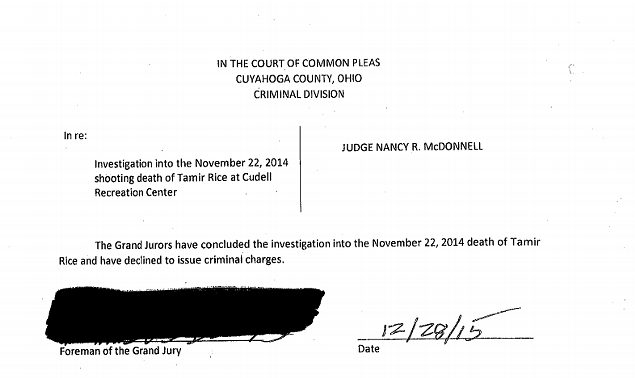I'll tell you how it looks, and it looks bad.
The grand jury that opted not to indict Cleveland police officers Timothy Loehmann and Frank Garmback in the shooting death of Tamir Rice never actually took a vote on the matter, according to the Cuyahoga County Prosecutor's Office.
The problem here is not just lack of accountability, however. It's lack of transparency. Some grand juries are mere investigative bodies. Their power to subpoena people, documents, and other evidence makes grand juries important tools in figuring out complicated or controversial legal cases.
In some cases, grand juries are easily manipulated tools of a prosecutor who wants a specific outcome, but wants to spread the blame for that outcome so it doesn't fall directly on the prosecutor's office.
It's a good thing that since 1993, the Cuyahoga County prosecutor has set as policy that all fatal use of deadly force cases should be put before a grand jury. This goes further than Ohio state law, which indicates the prosecutors office can have final say and dismiss charges against cops and rule death justifiable on their own.
But what isn't clear in the Tamir Rice case is how the Grand Jury even came to the conclusion that charges were unwarranted. The court in Cuyahoga County issued this judgment as shown below:

There's no indication that the Grand Jury made the decision in the case, which is what they are charged with doing.
What actually happened in the most significant grand jury hearing in county history isn't quite clear, and the mechanism by which the grand jury "declined to indict" — in Prosecutor Timothy McGinty's own words — is equally unclear.
The reporters at Cleveland Scene should be commended for keeping on this story. Their full report is worth reading.



















